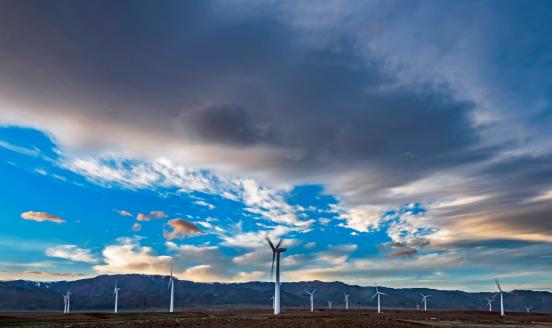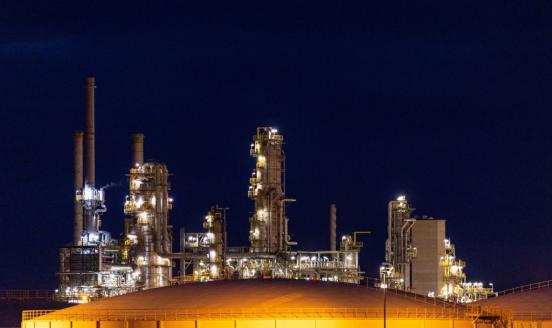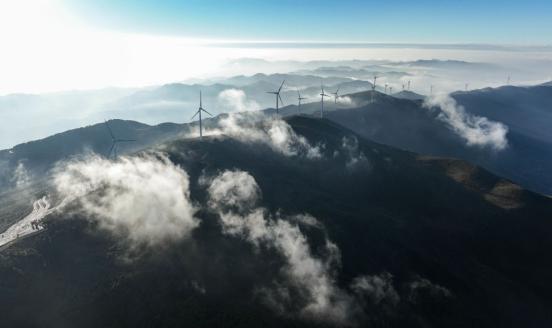A European approach to climate finance will make a deal at COP21 more likely
Europe needs to convince poor countries that it is serious about a climate deal. To do this it must act jointly and decisively to shape global climate








This op-ed was originally published in MNI and has also been published in Kamara Online, Kathemerini, Altinget, Rzeczpospolita, Handelsblatt and Le Monde,. It will also be published in Il Sole 24 Ore.
Europe spends significant resources on building wind-farms and investing in better insulation. At the same time, it burdens its industry with a plethora of emissions related regulations and levies, all with the aim of combatting climate change, a topic that EU citizens consider a significant problem. But with Europe producing less than 10% of global CO2 emissions, such costly efforts will not even delay climate change – instead, the efforts could even put other continents at a competitive advantage, allowing them to buy fossil fuel more cheaply and produce carbon intensive goods to be exported to Europe. Without an ambitious and constraining deal involving all major emitters, Europe’s mitigation effort could become not only costly, but largely futile.
This global coordination problem will be addressed at the Paris climate conference at the end of 2015. The most critical element in the negotiations is how to share the cost of decarbonisation. Developing countries argue that they need to pollute in order to grow. They say that developed countries are responsible for most man-made greenhouse gases in the atmosphere, and that their economic strength enables them to do more than developing countries. They therefore call on developed countries to not only make a greater domestic decarbonisation effort, but to also support them with financial resources in order to mitigate and adapt to climate change. At previous climate summits, a principal agreement has been reached to provide US$100 billion per year to that effect.
Financial resources are the best tool the EU has to make a global deal possible. Offering faster domestic abatement would have limited impact on the costs of climate change for other countries. It is therefore a weak bargaining chip. Consequently, the EU should focus on technology transfer and climate finance. And in contrast to sharing the mitigation burden, both are positive-sum contributions, as they cost the rich world less than the poor world would gain.
Already now, Europe is providing more than half of global climate finance. It should use this and further resources to obtain ambitious mitigation commitments from global partners that would contain the effects of climate change. Acting jointly and decisively would also allow Europe to shape the global climate finance architecture. This is not only about good governance of the involved sums. More importantly, according to the IEA, a global attempt to contain temperature increases below 2°C will necessitate investments of US$53 trillion. Ensuring that some of the investment demand falls on European exporters of low-carbon technologies and services, an area where the EU still has a competitive advantage, should be one goal of a strong and unified EU position.
A joint European stance on climate finance would reveal the true weight of the member states. It would make a difference if the 28 countries contributed a few billion each, or the bloc as a whole put some US$30 billion on the table. In order to demonstrate credibility – which is crucial in an international agreement that is supposed to run over many years without strong enforcement mechanisms – the EU should make clear how it wants to meet its commitments before and after 2020. Credibility will be more important in the negotiations than large but vague numbers. And a real transfer component is crucial, as investments in adaptation and leveraging private finance will require at least some public funding.
It would be logical to use some of the current resources collected in climate mitigation measures and earmark them for climate finance. Allocating a dedicated part of the revenues from selling emission permits could be one part. Fiscal revenues from a harmonized carbon tax on transport and heating would not only provide predictable revenues, but would also help to make the EU’s own domestic decarbonisation ambitions more efficient and credible. Channelling some of the current resources for building solar panels and wind turbines inside the EU, where electricity demand is falling, to poor but energy-hungry developing countries, would be an effective way of increasing the value of that spending.
A vaguely coordinated European position on climate finance will fail to impress poor countries that Europe is serious about a climate deal. A joint position backed by credible public and private resources will make a deal more likely, justifying the expensive domestic mitigation efforts and benefitting European industry.



